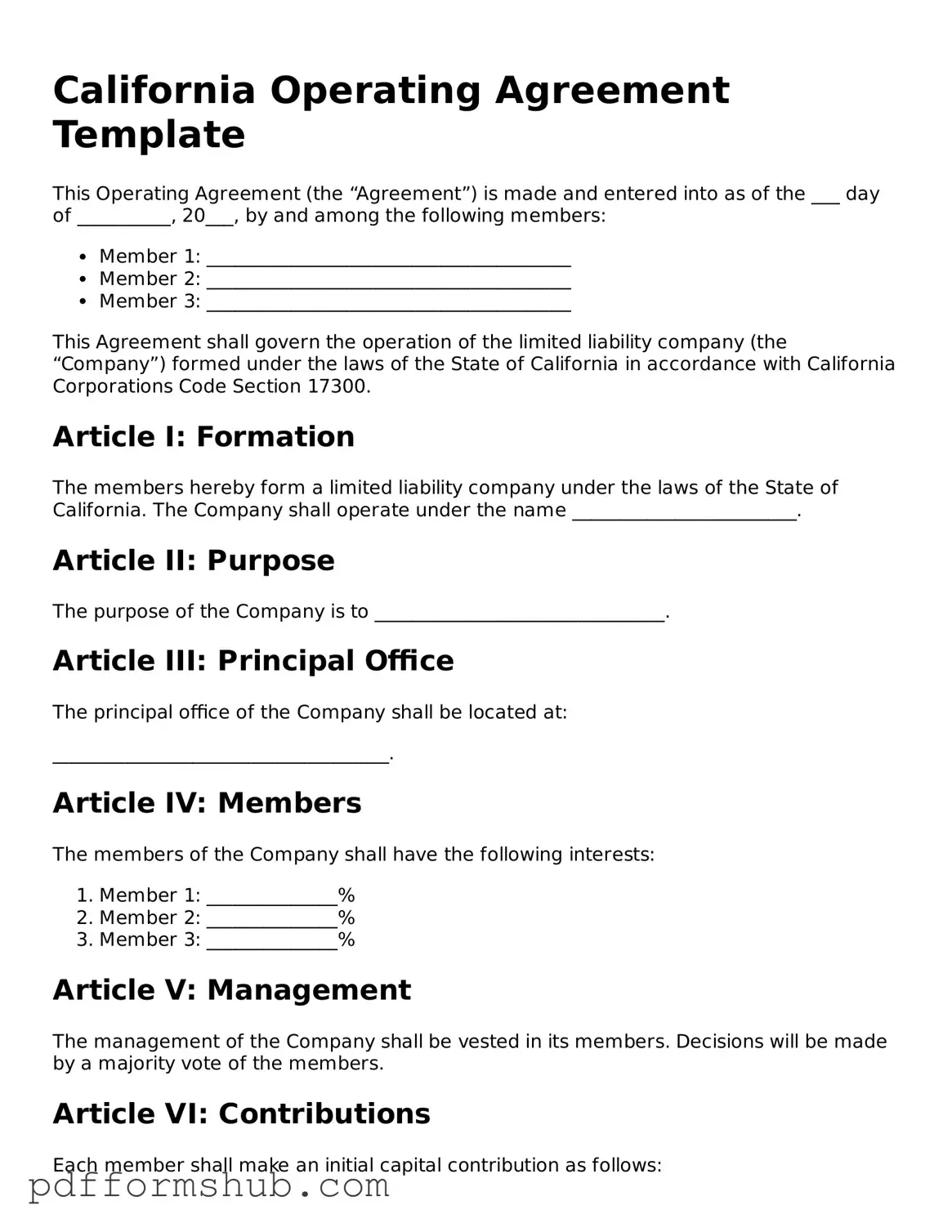Attorney-Verified Operating Agreement Form for California State
The California Operating Agreement form is a vital document that outlines the management structure and operational procedures of a limited liability company (LLC) in California. This agreement helps to clarify the roles and responsibilities of members, ensuring smooth business operations and minimizing disputes. To get started on establishing your LLC, fill out the form by clicking the button below.
Customize Form
